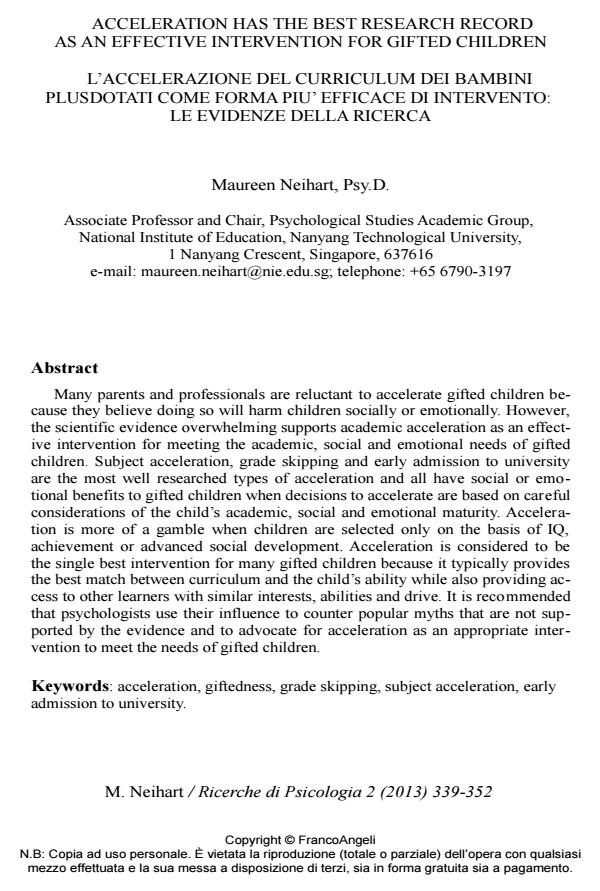Acceleration has the best research record as an effective intervention for gifted children l’accelerazione del curriculum dei bambini
Titolo Rivista RICERCHE DI PSICOLOGIA
Autori/Curatori Maureen Neihart
Anno di pubblicazione 2013 Fascicolo 2013/2
Lingua Inglese Numero pagine 14 P. 339-352 Dimensione file 202 KB
DOI 10.3280/RIP2013-002007
Il DOI è il codice a barre della proprietà intellettuale: per saperne di più
clicca qui
Qui sotto puoi vedere in anteprima la prima pagina di questo articolo.
Se questo articolo ti interessa, lo puoi acquistare (e scaricare in formato pdf) seguendo le facili indicazioni per acquistare il download credit. Acquista Download Credits per scaricare questo Articolo in formato PDF

FrancoAngeli è membro della Publishers International Linking Association, Inc (PILA)associazione indipendente e non profit per facilitare (attraverso i servizi tecnologici implementati da CrossRef.org) l’accesso degli studiosi ai contenuti digitali nelle pubblicazioni professionali e scientifiche
Many parents and professionals are reluctant to accelerate gifted children because they believe doing so will harm children socially or emotionally. However, the scientific evidence overwhelming supports academic acceleration as an effective intervention for meeting the academic, social and emotional needs of gifted children. Subject acceleration, grade skipping and early admission to university are the most well researched types of acceleration and all have social or emotional benefits to gifted children when decisions to accelerate are based on careful considerations of the child’s academic, social and emotional maturity. Acceleration is more of a gamble when children are selected only on the basis of IQ, achievement or advanced social development. Acceleration is considered to be the single best intervention for many gifted children because it typically provides the best match between curriculum and the child’s ability while also providing access to other learners with similar interests, abilities and drive. It is recommended that psychologists use their influence to counter popular myths that are not supported by the evidence and to advocate for acceleration as an appropriate intervention to meet the needs of gifted children.
Parole chiave:Acceleration, giftedness, grade skipping, subject acceleration, early admission to university.
Maureen Neihart, Acceleration has the best research record as an effective intervention for gifted children l’accelerazione del curriculum dei bambini in "RICERCHE DI PSICOLOGIA " 2/2013, pp 339-352, DOI: 10.3280/RIP2013-002007